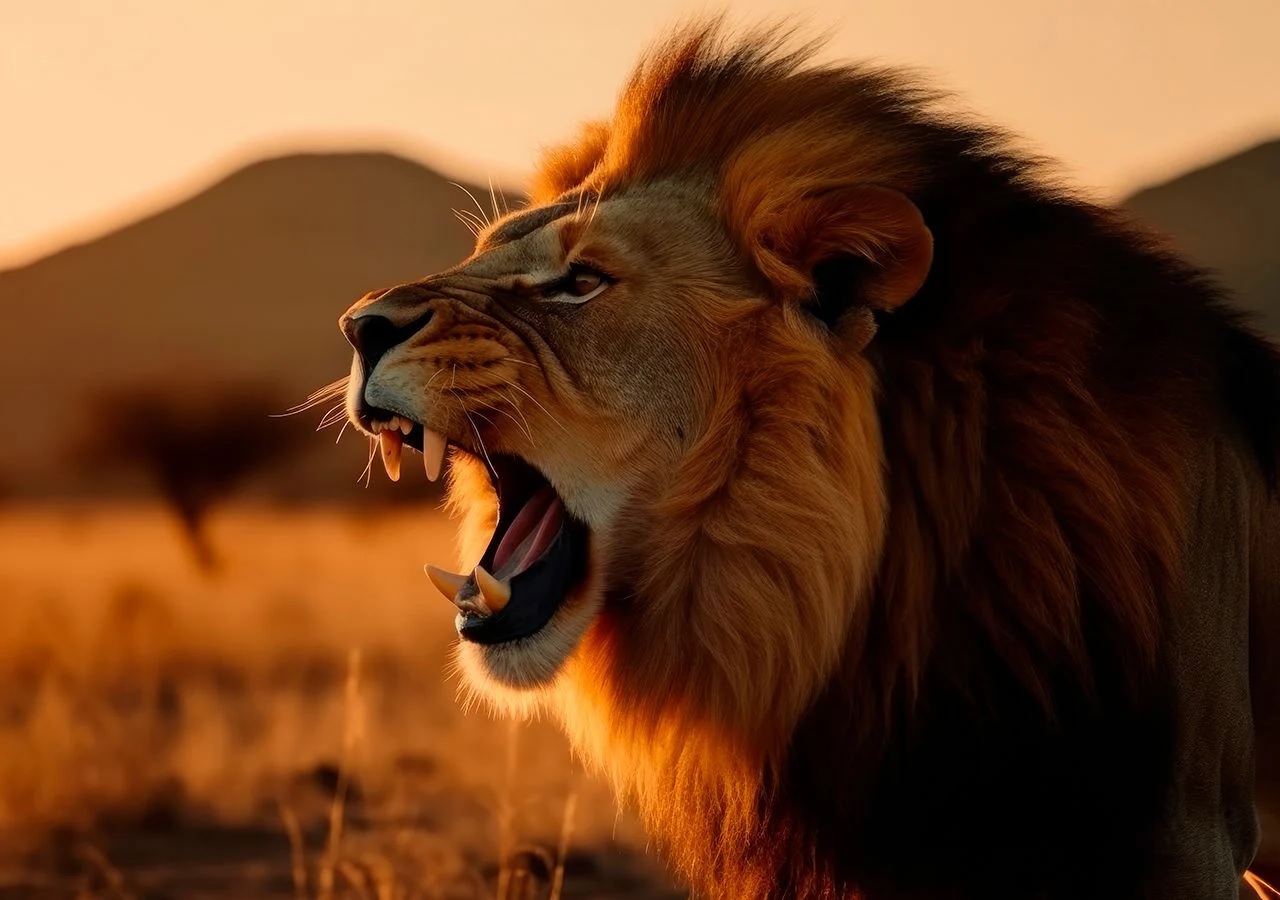
Ever wondered why a lion's roar sends chills down your spine? Lions, often called the kings of the jungle, have one of the most powerful roars in the animal kingdom. Their roar can be heard up to five miles away, making it a crucial tool for communication and territory marking. But there's more to these majestic creatures than just their fearsome roar. From their social structures to their hunting techniques, lions are fascinating animals with many intriguing facts. In this blog post, we'll delve into 35 of the most captivating lion roar facts that will leave you in awe of these magnificent big cats. Buckle up for a wild ride through the world of lions!
The Power of a Lion's Roar
Lions are known as the kings of the jungle, and their roar is one of the most iconic sounds in the animal kingdom. Let's dive into some fascinating facts about this powerful sound.
-
A lion's roar can be heard up to 5 miles away. This impressive range helps lions communicate with their pride and establish territory.
-
Roaring is a way for lions to show dominance. The louder and more frequent the roar, the more dominant the lion appears to others.
-
Both male and female lions roar. While males typically have a deeper, louder roar, females also use roaring to communicate and coordinate with the pride.
-
Lions usually roar in the evening. This is when they are most active, and it helps them locate each other after a day of resting.
-
A lion's roar can reach 114 decibels. That's about as loud as a rock concert or a chainsaw.
The Science Behind the Roar
Understanding the mechanics of a lion's roar can be just as fascinating as the sound itself. Here are some intriguing scientific facts.
-
Lions have a unique larynx. Their vocal cords are shaped differently, allowing them to produce such a powerful sound.
-
The roar is produced by a combination of air pressure and vocal fold vibration. This unique mechanism is what gives the roar its deep, resonant quality.
-
Lions have a special ligament in their vocal cords. This ligament allows them to stretch and contract their vocal cords more than other animals, contributing to the roar's volume and depth.
-
The lion's roar is a low-frequency sound. These low frequencies travel farther than high-frequency sounds, making the roar audible over long distances.
-
Roaring uses a lot of energy. Lions need to be in good health and well-fed to produce their powerful roars.
Roaring and Social Structure
Roaring plays a crucial role in the social dynamics of lion prides. Here are some facts about how roaring influences their social structure.
-
Roaring helps lions maintain their territory. By roaring, lions can warn other prides to stay away from their territory.
-
It strengthens bonds within the pride. Roaring together helps lions reinforce social bonds and coordinate group activities.
-
Roaring can deter intruders. A loud, powerful roar can intimidate potential threats and keep the pride safe.
-
Cubs learn to roar by mimicking adults. Young lions practice roaring by copying the adults in their pride, gradually developing their own powerful roars.
-
Roaring is a way to reunite the pride. After a hunt or a period of separation, lions use roaring to find each other and regroup.
Roaring and Hunting
While roaring is often associated with communication and territory, it also has implications for hunting. Here are some facts about how roaring relates to a lion's hunting behavior.
-
Lions rarely roar while hunting. Roaring can alert prey to their presence, so lions usually stay silent during a hunt.
-
Roaring can signal the start of a hunt. Sometimes, lions will roar to gather the pride before setting out to hunt.
-
Roaring can attract scavengers. The sound of a lion's roar can draw in scavengers like hyenas, hoping to steal a meal.
-
Roaring can help lions locate prey. By listening to the responses of other animals, lions can determine the location of potential prey.
-
Roaring can be a way to celebrate a successful hunt. After a kill, lions may roar to announce their success and call the pride to the feast.
Roaring in Captivity
Lions in captivity also exhibit roaring behavior, though it can differ from their wild counterparts. Here are some facts about roaring in captivity.
-
Captive lions still roar to communicate. Even in zoos or sanctuaries, lions use roaring to communicate with each other and establish dominance.
-
Roaring can be a sign of stress. In captivity, lions may roar more frequently if they are stressed or uncomfortable.
-
Captive lions may roar to interact with visitors. Some lions roar in response to the presence of humans, either out of curiosity or as a display of dominance.
-
Roaring can help captive lions feel more at home. Providing opportunities for lions to roar can improve their well-being and help them feel more comfortable in their environment.
-
Captive lions may have different roaring patterns. The frequency and intensity of roaring can vary depending on the individual lion and its environment.
Fun Facts About Lion Roars
Let's wrap up with some fun and quirky facts about lion roars that you might not know.
-
Lions are the only big cats that roar together. Other big cats, like tigers and leopards, usually roar alone.
-
A lion's roar can be felt as well as heard. The low-frequency sound waves can create vibrations that you can feel in your chest.
-
Roaring is a learned behavior. Lions learn to roar by listening to and mimicking other lions.
-
Lions can recognize each other's roars. Each lion has a unique roar, and they can identify each other by the sound.
-
Roaring can be a form of play. Young lions often practice roaring during play, helping them develop their vocal skills.
-
Lions may roar more during mating season. Roaring can be a way to attract mates and assert dominance over rivals.
-
Roaring can be a way to show affection. Lions sometimes roar softly to each other as a form of bonding.
-
The roar of a lion has inspired many cultural references. From movies to literature, the lion's roar is often used to symbolize power and majesty.
-
Lions have been known to roar in their sleep. Just like humans talk in their sleep, lions can sometimes be heard roaring while they snooze.
-
The sound of a lion's roar can travel through water. Low-frequency sounds like a lion's roar can travel long distances underwater, making it possible for lions to communicate across rivers and lakes.
Roaring to the End
Lions are fascinating creatures with their powerful roars, social structures, and unique behaviors. These big cats communicate through a variety of sounds, but their roar is the most iconic. It can be heard up to five miles away, serving as a tool for territory marking and communication within the pride. Lions live in groups called prides, which usually consist of related females, their offspring, and a few adult males. They are apex predators, playing a crucial role in maintaining the balance of their ecosystems. Understanding these facts about lions not only highlights their importance in the wild but also emphasizes the need for their conservation. Protecting lions ensures the health of their habitats and the survival of many other species. So next time you hear about lions, remember these incredible facts and the vital role they play in nature.
Was this page helpful?
Our commitment to delivering trustworthy and engaging content is at the heart of what we do. Each fact on our site is contributed by real users like you, bringing a wealth of diverse insights and information. To ensure the highest standards of accuracy and reliability, our dedicated editors meticulously review each submission. This process guarantees that the facts we share are not only fascinating but also credible. Trust in our commitment to quality and authenticity as you explore and learn with us.


